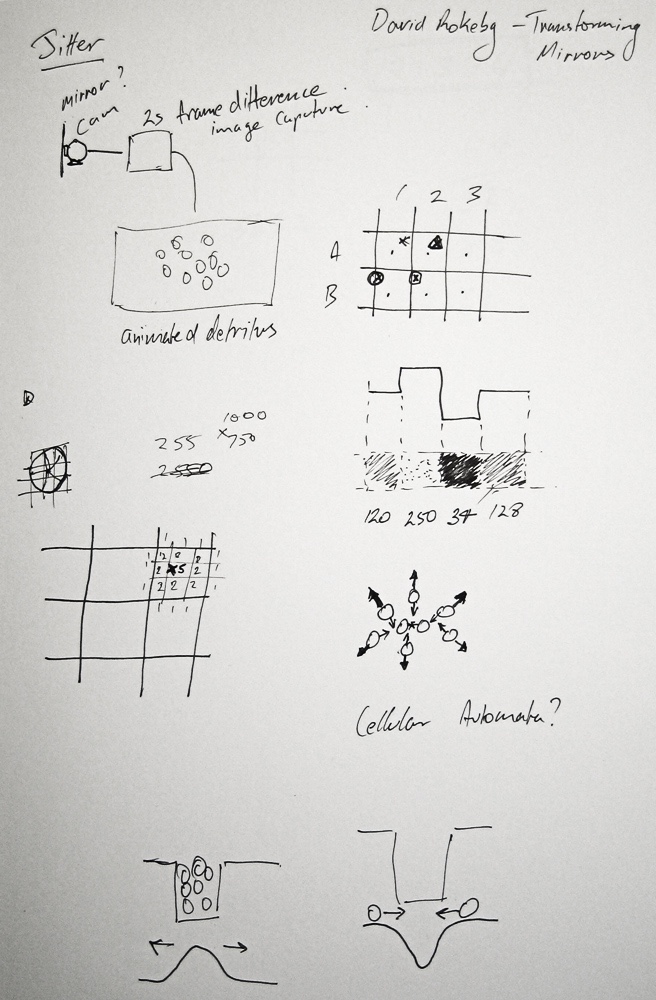
Knowledge, Knowing and Being: Software Art as a vehicle for the investigation of emerging concepts in Cognition
A PhD via studio practice has as doctorates normally do a thesis as an outcome. For art the thesis consists of two parts, a group of artworks that comprise the body of the thesis and an explanatory document called the exegesis which constructs a context for the artwork and helps articulate why it is "new knowledge". I completed my PhD candidature in mid 2008.
Below is my abstract for this project containing links to the completed works, and after that links to the full exegesis and documentation of the development of the works that comprised the thesis.
The development of the computer has had a major impact on almost all aspects of knowledge and culture: it has had a profound impact on our understanding of complexity and intelligence; and the computer is a mirror made from what we thought we knew about ourselves, often defining us by revealing what we are not.
Artists have been exploring the computer as a medium of expression for over forty years, yet for most of that time Software Art (expression through programming) and its antecedents has oscillated between formalism and techno-utopianism. The practise of software art is based in formal language: the manipulation of symbols and logic. Expression of intuition in a distinctive form is often confounded in this medium.
This project considers the metaphorical representation of cognitive process (the codes of knowledge, the processes of knowing, and the states of being) in the mirror of computation and in the light of insights and theories about language and cognition that have emerged from our interaction with the universal machine. Through making the works that form this thesis an expressive open-ended methodology for software poiesis has been developed.
The thesis consists of four works, constructed from software and manifested on flat panel displays as temporal images. The Conditions for Ambient Cognition has four parts: Faith in Reason, Ontological Drift, Dialectic Seepage, and Transcendental Jitters . The four parts follow processes of cognition and being; perception, sensation, communication, action. The second work Stories about You is a meditation on the construction of personal and social consciousness; Communal Sense considers the communication of knowledge and development of understanding. The fourth work The Transient Taxonomies of Art is an examination of the concept of an ecology of ideas.
The final works reflect a group of emerging theories of cognition, which are collected under the title of Distributed Cognition, and are based on insights that all communication is based in context rather than code, and similarly all cognition is context dependent, not just through embodiment but also across artefacts and social groups.
The outcomes of this project demonstrate the application of the methodological process, and contribute towards the development of a more fluid, expressive and less proscribed form of practise in software art. This methodology is independent of a particular set of software, but does suggest a process for the evaluation of software tools and environments, so that it can continue to be applied as software develops. A related aspect is the consideration and selection of the material qualities of software, algorithms and numerical function, which can be used to enhance the work and give it a distinctive quality.
The consideration of contemporary art discourse and practice in light of Distributed Cognition is potentially a fruitful source of new insight but has not been considered in depth here. It offers a flexible and open-ended conceptual model for the further development of the work presented here.
The concept of "open-endedness" that has emerged from the considerations of the materials of software art is crucial to resolving the confusion between algorithmic behaviour and novelty in software art.
This research has shown that with a greater understanding of the nature of complexity, and the semantics of expression through formal language, the medium can develop into a mature and distinctive form. Potentially Software Art can exert a wider influence on our understanding of ourselves, our coexistence with the computer, its future application and development.